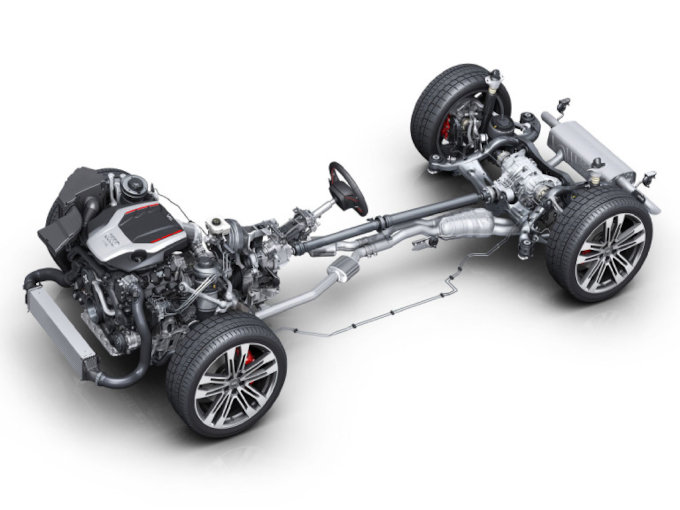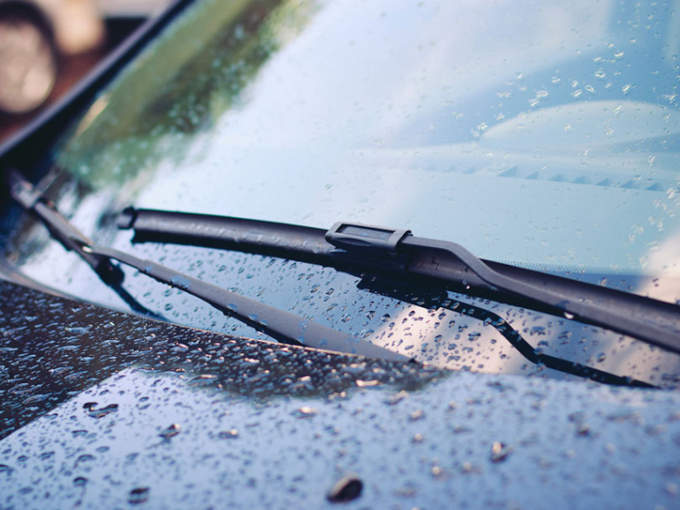At AAMCO of Keller we’re your local transmission experts for more than 60 years with a nationwide warranty. Many of our customers that are facing Transmission issues also experience drivetrains with problems. A drivetrain may be the least understood part of a vehicle. This is due to several factors, including the fact that the term “drivetrain” is often used interchangeably with powertrain and driveline. The drivetrain includes the transmission, the driveshaft, the axles, and the wheels. Simply put, it works in conjunction with the engine to move the wheels. The drivetrain system is an essential component of a vehicle and the transmission is an integral part of the drivetrain.’
What are the common types of Drivetrains?
AWD – All Wheel Drive
The all-wheel drivetrain system has fluid-filled differentials and advanced electronics enabling the engine to send power to all four wheels. This provides a vast and highly improved capability for driving on wet or slippery roads. Examples of vehicles with AWD include the Ford Fusion, Nissan Rogue, BMW 3-Series, Honda CR-V and Audi A4.
RWD – Rear Wheel Drive
With rear-wheel drive, all of the engine’s power is sent to the back two wheels. Opposite of cars with FWD, a car with RWD is being pushed down the road. This does not work well in areas with icy winters because the level of traction is low. Despite this, RWD provides balance and offers superior braking and handling. Common RWD vehicles in Texas include the Ford Mustang, Lexus IS, Chevrolet Camaro and the BMW 5-Series. In rear-wheel drivetrain arrangements, power is transferred to the rear wheels to move the car. It’s the drivetrain arrangement that’s been around the longest and is still used today on many cars and trucks.
FWD – Front Wheel Drive
A car or truck with front-wheel drive has all of the engine’s power being sent to the two front wheels, so the drivetrain is basically pulling the car down the road. This serves to give the car more traction, providing stability, predictability and dependability when the roads get a little icy. Popular FWD vehicles include the Honda Civic, Volkswagen Golf, Mini Cooper, Toyota Corolla and the Honda Accord.
Front-wheel drivetrains have the same basic set-up as rear-wheel drivetrains, but the parts are a bit different:
Transaxle – Instead of a transmission, most front-wheel drivetrains have a transaxle. A transaxle combines the transmission and differential into one single unit. If you have a front-wheel drive car and you want to earn Car Guy bonus points, don’t refer to your transmission as a transmission, but as a transaxle.
While most cars that use transaxles mount them right next to the engine, some sports cars use transaxles on rear-wheel drive trains for even weight distribution.
Half-shaft – Because all the components of the drivetrain are in the front of the car, front-wheel drive vehicles don’t need long drive shafts to transfer torque to the wheels. Instead, a half-shaft connects from the transaxle to the wheel assembly.
In place of U-joints, half-shafts connect the transaxle and the wheel assembly with constant velocity joints, or CV-joints. CV-joints use a ball bearing mechanism to reduce friction and allow for the more complex wheel movements used in front-wheel drive cars — remember, front-wheel drive cars not only have to move the car forward, but also steer it left and right.
4WD – 4 Wheel Drive
The four-wheel drivetrain is similar to AWD in that the engine’s power is sent to all four wheels. However, 4WD is typically more robust because it’s designed to handle off-road driving. Some of the most common 4WD vehicles in Texas include the Range Rover, Ford F-150, Ford f-250.
The Drivetrain & Transmission
The drivetrain and the transmission are actually two very different concepts. The main function of the transmission is similar to the chain on a bicycle: it keeps the engine turning in time with the wheels, regardless of what gear the vehicle is in. The drivetrain represents everything that is behind the transmission involved in propelling the vehicle. The main function of the drivetrain is basically to convey power from the vehicle’s engine, through the transmission to the drive wheels on the vehicle to control the amount of torque. “Torque” is turning or twisting force.
What are the Parts of a Drivetrain?
The drivetrain is comprised of a collection of components in a vehicle that transfer power from the transmission to the wheels/ drive it forward. These components include the driveshaft, CV joints, the differential, the axle shafts and the U-joints.
Driveshaft – is a long tube of steel that is linked to a car’s transmission at one end and the wheels at the other. It transfers the mechanical power from the transmission to the other components of the vehicle.
U-Joint, or Universal Joint – is a flexible pivot point that transmits power allowing for varying angles of the driveshaft.
CV Joints, or Constant-Velocity Joints – are part of the driveshaft. These joints are designed to be able to bend in any direction while continuing to turn the drive wheels at a constant velocity.
The differential is where the power makes its last stop before spinning the wheels.
Axle Shafts – are a single rotating shaft, on either side of the differential, which delivers power from the final drive assembly to the drive wheels.
Technicians sometimes refer to driveline, drivetrain and powertrain interchangeably when referring to the drivetrain system of an automobile. This can cause confusion, but in essence, all of these terms describe the same system within the vehicle.
AAMCO of Keller – Dallas/Fort Worth Drivetrains Trusted Mechanics
Don’t let common Drivetrain problems leave you without a vehicle or with even more costly repairs. The first sign of vibrations from underneath the vehicle, abnormal noises turning problems or shuddering during acceleration you need to contact AAMCO of Keller and schedule an immediate checkup and transmission diagnostic with our team of expert mechanics. You depend on your car, and when it stops running, you need a reliable repair at a reasonable price to get you back on the road as soon as possible. At AAMCO Transmission and Auto Repair of Keller, we live up to our nearly 60 years as the most trusted name in transmission repair with quality, guaranteed work at a fair price. You will never get unnecessary repairs, nor will you get less than you need or inferior, junkyard parts. When you leave AAMCO, you know your repairs will be backed by a no-questions-asked nationwide warranty—the strongest nationwide warranty in the industry.
AAMCO of Keller is here to help with your Transmission or Drivetrain problems. Call us today at (817)-431-0009 to schedule an appointment or click here to schedule your AAMCO Of Keller appointment online!










